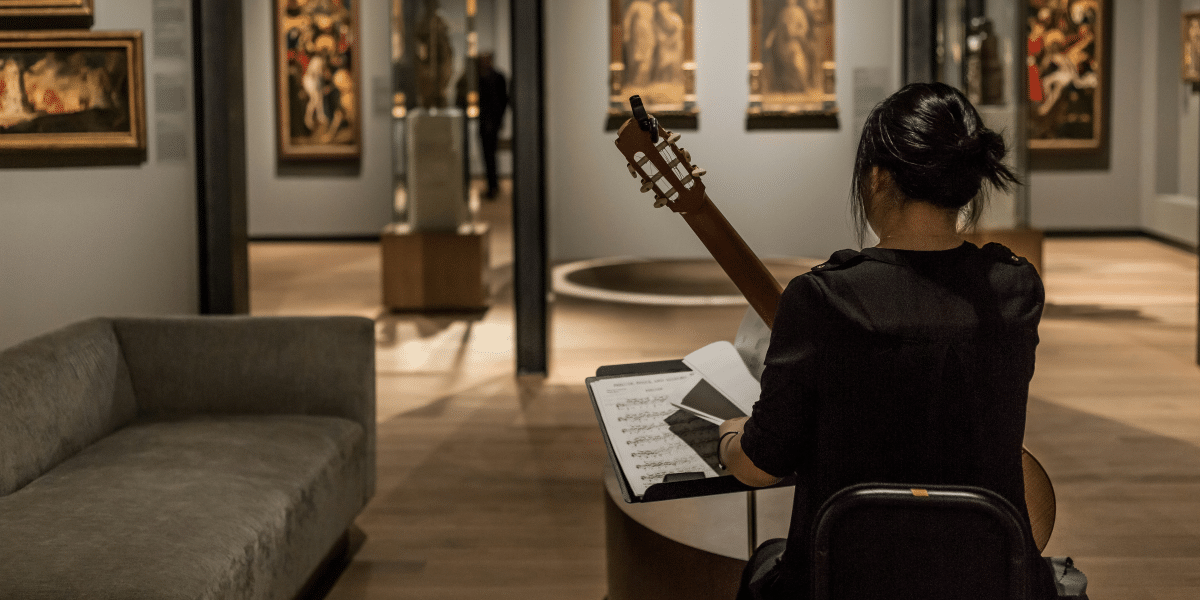Guitar museums offer a unique experience for music lovers, showcasing the guitar’s evolution, craftsmanship, and cultural significance. These institutions celebrate the artistry of the instrument, from its early designs to its impact on modern music. For musicians, historians, and fans, guitar museums provide an engaging journey through the instrument’s rich legacy, exploring how it has shaped and been shaped by generations.
How Do Guitar Museums Showcase Instrument Evolution?
Guitar museums trace the instrument’s development from its earliest forms to the present day, highlighting innovations in design, technique, and materials. Exhibits often feature historical pieces, showing how guitars transitioned from simple acoustic models to complex electric instruments, reflecting changes in both musical demands and technological advancements.
These displays provide visitors with a deeper understanding of the craftsmanship and engineering behind iconic guitar designs, showcasing how each evolution enhanced the instrument’s sound, playability, and versatility. From early wooden models to modern electric and hybrid versions, these museums highlight key innovations such as the introduction of electric pickups, adjustable truss rods, and new body shapes.
Many museums also offer insights into how guitar construction and design have influenced major shifts in music genres, from classical and folk to rock and jazz. By immersing visitors in the rich history of the guitar, these museums not only preserve the legacy of the instrument but also demonstrate its ongoing evolution and its integral role in shaping modern music culture.
How Do Museums Showcase the Unique Artistry of Guitars?
Each guitar tells a story through its design, materials, and craftsmanship. Museums highlight the work of master luthiers who meticulously shaped these instruments by hand. Intricate woodwork, unique inlays, and custom finishes showcase the skill involved in guitar making. By preserving and displaying these artistic elements, museums celebrate the guitar not only as a musical instrument but also as a work of art.
How Do Guitar Museums Connect Visitors with Music Legends?
Many guitar museums feature instruments owned or played by famous musicians, connecting visitors to iconic moments in music history. These exhibits often include guitars used by legends like Jimi Hendrix, Eric Clapton, and Eddie Van Halen, offering a glimpse into their musical journeys. This connection with celebrated artists enhances the museum experience, allowing fans to appreciate the instruments that shaped unforgettable songs and performances.
Exploring Cultural Impact Through Guitar Exhibits
Guitar museums also illustrate the guitar’s influence on popular culture, from early jazz to rock, blues, and pop. These museums demonstrate the instrument’s adaptability and role in shaping cultural trends by showcasing guitars from various eras and genres. Many exhibits delve into how the guitar became a symbol of rebellion, self-expression, and social change, particularly during the 20th century. This cultural context adds depth to the museum experience, providing visitors with a broader understanding of the guitar’s societal impact.
What Can Visitors Expect to See in Guitar Museums?
Guitar museums typically feature a diverse range of exhibits, including:
- Historic Instruments: Rare and antique guitars that show the instrument’s evolution over centuries.
- Signature Models: Famous guitars associated with legendary musicians, capturing moments in music history.
- Artistic Designs: Unique pieces with intricate craftsmanship, inlays, and custom finishes.
- Interactive Displays: Some museums offer hands-on exhibits or listening stations, allowing visitors to explore sound and technique.
- Educational Programs: Workshops, lectures, and demonstrations that delve into guitar building, history, and music theory.
Why Are Guitar Museums Important for Music Education?
Guitar museums offer a valuable educational experience, providing insights into music history, instrument-making, and performance. For aspiring musicians, these museums offer a learning environment that combines visual displays with practical knowledge. Many museums host events and workshops where visitors can meet luthiers, attend demonstrations, and even try playing some instruments. This hands-on approach enhances appreciation and deepens understanding of the guitar’s role in music.
Supporting the Legacy of Guitar Craftsmanship
By preserving vintage and rare instruments, guitar museums support the legacy of traditional craftsmanship. They celebrate the contributions of luthiers whose skills have shaped guitar sounds and aesthetics across generations. This preservation honors the guitar’s heritage, keeping alive the artistry and techniques essential to its construction. Through these exhibits, visitors gain a profound respect for the skill and dedication required to create each instrument.
Why Guitar Museums Matter
Guitar museums serve as cultural landmarks, offering an immersive exploration of the guitar’s history, artistry, and profound impact on music. These museums provide a unique opportunity to connect with legendary instruments, showcasing the craftsmanship and innovation that have shaped the guitar into the iconic instrument it is today. By highlighting significant milestones in guitar design and evolution, they celebrate the instrument’s cultural legacy and its transformative role in shaping various music genres.
For music lovers, it’s a celebration of an instrument that has inspired countless artists and defined musical eras. From iconic guitars once owned by legendary musicians to exhibits on the manufacturing techniques and technological advancements that have fueled the guitar’s evolution, these museums offer a deep dive into the cultural and historical significance of the instrument. Through interactive displays and expert storytelling, guitar museums not only preserve the history of the guitar but also inspire new generations of musicians and music fans.
Published by: Khy Talara








